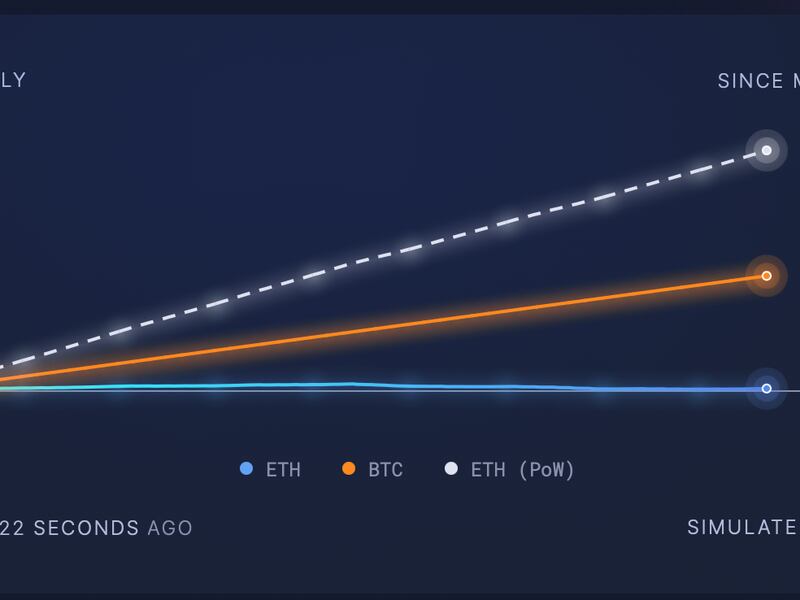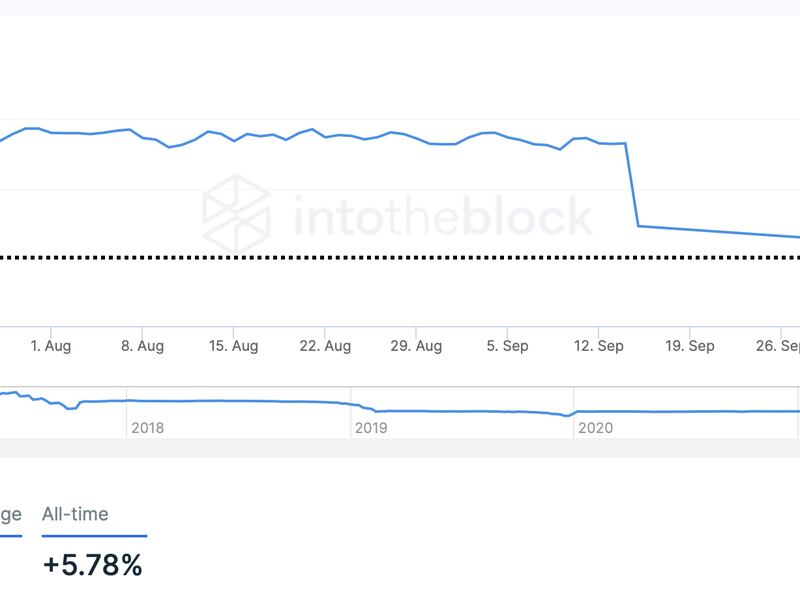Ether Sees Biggest Weekly Gain in 3 Months, ETH-BTC Rally to Continue

Smart contract platform Ethereum's recent technological overhaul is beginning to have an intended bullish effect on its native token ether's (ETH) price.
ETH rose over 16% in the seven days to Oct. 30, its best weekly percentage price gain since mid-July, overshadowing bitcoin's (BTC) 5% rise, CoinDesk data show.
"Both major coins are [finally] have their moment, but since people are still adjusting to ether's recent tokenomics changes, momentum is still stronger there for now," Jordi Alexander, chief investment officer at proprietary trading firm Seleni Capital said.
On Sept. 15, Ethereum transitioned to a proof-of-stake (PoS) consensus mechanism from a proof-of-work (PoW) mechanism, replacing miners with validators, who explicitly lock capital in the form of ETH on the platform as entities responsible for confirming transactions.
Since the switch, Ether's supply has increased by 1,300 tokens. The net-supply increase would have been more than 481,000 had the blockchain continued to use the PoW mechanism.

Ether's net issuance, also known as annualized inflation rate, has declined from 3.6% to nearly 0%, falling below bitcoin's 1.7%, according to data sourced from ultrasound.money.
Meanwhile, data from blockchain analytics firm IntoTheBlock shows ether's net issuance has actually declined below zero. In other words, ether has turned deflationary – a coin with supply decreasing over time instead of increasing. That's at a time when investors worldwide are facing a shortage of assets that could protect their money from rampant inflation.

Ether's outperformance likely to continue
The ether-bitcoin ratio, measuring ether's price in bitcoin terms, rose 10% last week, registering the biggest gain since July. The ratio's uptrend could continue, according to prominent traders.
"Ether may continue to outperform bitcoin as ETH's annual issuance continues to fall rapidly. Therefore, thanks to the transaction fee burn mechanism, any increase in on-chain activity should bring Ethereum firmly into deflationary issuance territory and may have a substantial outsized effect on Ethereum’s price," Josh Olszweicz, head of research at digital asset fund manager Valkyrie Investments, told CoinDesk.
In August last year, Ethereum activated a mechanism to burn a portion of transaction fees paid in ETH by users, essentially tying the number of ETH burned or taken out of circulation with the network usage.
So, as Olszweicz said, an increase in network usage will further skew demand-supply dynamics in favor of ether bulls. Since early August last year, over 2.6 million ETH worth $8.65 billion has been taken out of circulation, according to ethburned.info.
Shiliang Tang, chief investment officer at crypto hedge fund Ledger Prime, said ether's deflationary appeal would get stronger overtime, attracting investors.
"A lot of sidelined capital is more attracted to ETH storyline than BTC at the moment," Tang said. "I expect ETH to maintain lead over BTC, as ETH's deflationary nature will slowly be felt over time."
Tang added that "bitcoin would continue to face supply overhang from miners (more of a consistent drip of supply as opposed to large blocks) with bitcoin price here [around $20,000]."
Ether's switch to PoS has permanently freed the market from daily miner selling. According to Cumberland, Ethereum miners used to sell $40 million worth of ether daily. Bitcoin continues to use the PoW mechanism, where miners solve complex algorithmic puzzles to validate transactions in return for rewards paid in BTC. Miners typically liquidate coins regularly to fund their operations.
Macro risks persist
While ether's fundamentals favor a continued rally, the cryptocurrency remains vulnerable to adverse macroeconomic factors.
The Federal Reserve (Fed) is widely expected to deliver its fourth straight 75 basis point interest rate hike on Wednesday and signal a less aggressive approach for the coming months. The expectations for the so-called Fed pivot in favor of slower tightening have brought life back to risk assets, including cryptocurrencies.
However, selling pressure may return if the so-called Fed pivot in favor of slower tightening is accompanied by a strong-worded message, saying rates could remain higher for longer.
Wall Street Journal's Nick Timiraos, widely hailed as the Fed mouthpiece, published an article over the weekend, saying the central bank could holder rates higher for longer as consumers and businesses are providing less sensitive to ongoing monetary tightening. The Fed has raised rates by 300 basis points this year, roiling asset markets.








